Wondering if the Niki Nakayama MasterClass is right for you and if it's worth buying?
Then this Niki Nakayama MasterClass review is here to help.
I've completed Nakayama's class and attempted to cook several of the recipes from it. Plus, I've completed many other online cooking courses and so I can compare and contrast with what else is on offer.
In this Niki Nakayama MasterClass review, I’m going to take you through the highs and lows of this course, let you know if I actually think this course is doable, and if there are any deal breakers worth knowing about.
I've also included some of the pictures of the food I cooked!
.
Quick summary
You will learn:
- The centuries old tradition of kaiseki, with a personal, modern twist
- All about traditional Japanese cooking and how you can adapt it to your own kitchen
- How to work in a mottainai zero-waste approach
- 8 delicious recipes using rockfish and tuna
- Niki Nakayama’s Michelin star tips for creating amazingly beautiful food
Pros
- Unique opportunity to learn from an incredible 2 Michelin star chef
- Really great teaching style from Niki and her wife and sous chef, Carole
- Great instructions for making kaiseki in your kitchen at home
- Impressive, but manageable recipes
- On screen glossary for unfamiliar words
Cons
- Not for everyone
- Hard to source ingredients
- Would like to see more information in the workbook
Length of course: 18 videos totalling 4 hours and 7 minutes of video content
Best for: fans of Japanese cuisine, seafood enthusiasts, anyone looking to broaden their cooking repertoire, anyone who wishes they could eat at n/naka, and Niki Nakayama fans!
Overall: this is a really great class that’s instructional, beautiful and inspiring. I started the class feeling part excited, part daunted to craft such beautiful food, but with Nakayama’s guidance, came away with a renewed respect and enthusiasm for Japanese cuisine.
This is Niki Nakayama’s only instructional content out there, so it’s a truly unique opportunity to learn the secrets behind her incredible food.
About Niki Nakayama

Niki Nakayama is a Japanese culinary icon. She’s a champion of female chefs in an incredible male-dominated field.
She founded the all-female staff restaurant, Azami Sushi Cafe, in 2000 but found that many Japanese men would leave when they found out that the sushi chef was a woman.
Undeterred, she founded her eponymous restaurant n/naka in 2011, with the aim of focusing purely on food and not her gender.
Fast forward 10 years and she’s won 2 Michelin stars at n/naka and she’s respected all across the world.
If you’ve never come across her work before, I’d definitely recommend checking out her episode of Chef’s Table and also taking a look at the trailer for her MasterClass:
Niki's class features in our best online cooking courses review.
About Carole Iida-Nakayama
It doesn’t feel fair to introduce this class without a mention to Niki’s partner at work and at home: her wife, Carole.
Iida-Nakayama is an amazing chef in her own right. She grew up around her family’s sushi restaurant and founded her own two restaurants — Taisho Japanese Grill and Haiku Kitchen — before joining the n/naka team in 2012.
Niki says that Carole is the person who takes her crazy ideas and translates them into things that other chefs can understand. And Carole does just that in this class too.
She’s a fountain of knowledge and a great addition to this MasterClass.
About Masterclass
MasterClass is an online-learning platform with one very simple goal:
To enable you and I to learn from the world’s best.
There are over 100 household names on their platform including chefs Gordan Ramsay, Thomas Keller, Yotam Ottolenghi, and many, many more experts in fields beyond cooking.
You can learn mindfulness from Jon Kabat-Zinn, photography from Annie Leibovitz and Jimmy Chin, and even learn how to train your dog with Brandon McMillan.
I’ve personally taken over 10 MasterClass to date and really love the chance to get insights into the minds of the greats!
That said, the MasterClass learning style isn’t for everyone so it’s really helpful to understand its pros and cons before taking the plunge and buying a class.
So here’s the detailed lowdown of the Niki Nakayama MasterClass.
An inside look into Niki Nakayama's MasterClass
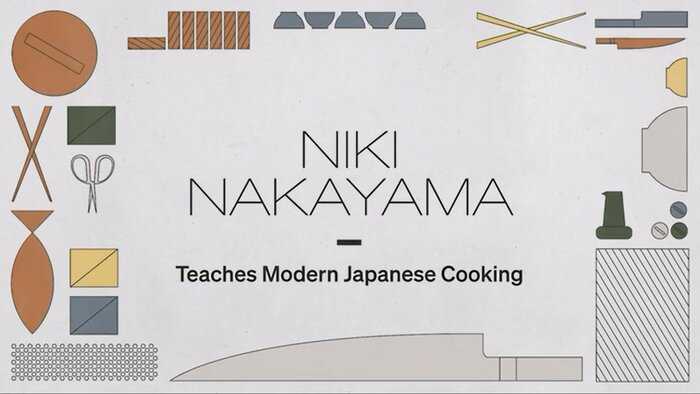
Niki Nakayama’s MasterClass consists of:
- Length: 18 videos totalling 4 hours and 7 minutes
- Workbook content: 48 page recipe book
To give you an idea of what’s inside, I’ll give you a play by play of each lesson and also the types of lessons that are included.
As with many MasterClasses, Lesson 1 is a brief introduction and Lesson 18 includes a few closing words from Niki.
Aside from these lessons, the rest fall into three main categories:
- About Japanese cuisine and kaiseki
- Preparation techniques
- Recipes to create your own kaiseki meal
I’ve grouped the lessons into these sections so you can easily see what the balance is between hands on cooking and theory.
Section 1 of 3: About Japanese cuisine and kaiseki
Lessons 2 & 7: Kaiseki Cooking & Balance in Kaiseki
The MasterClass kicks off with an introduction to kaiseki cooking from Nakayama. This class, filled with mouth-watering examples of her work, will really get you excited to get in the kitchen.
Later, Nakayama explores the idea of balance within a kaiseki meal, and showcasing nature through food.
You’ll also get to hear her thoughts on how historical scarcity of food instigated the tradition of having tiny, but incredibly beautiful dishes in Japan.
Within these two kaiseki informational classes, you’ll get to learn:
- The cornerstone fundamentals of kaiseki
- How and where kaiseki originated
- Nakayama’s approach to balancing tradition and modern cuisine within kaiseki
- How you can take cues from nature to source the most incredible ingredients
- How Nakayama uses her own home garden to influence her menu at n/naka
- Ways to mimic nature in your dishes, and bring the ocean or forest into your cooking
Lessons 3, 5 & 16: Japanese Pantry Essentials, Culinary Essentials & Donabe
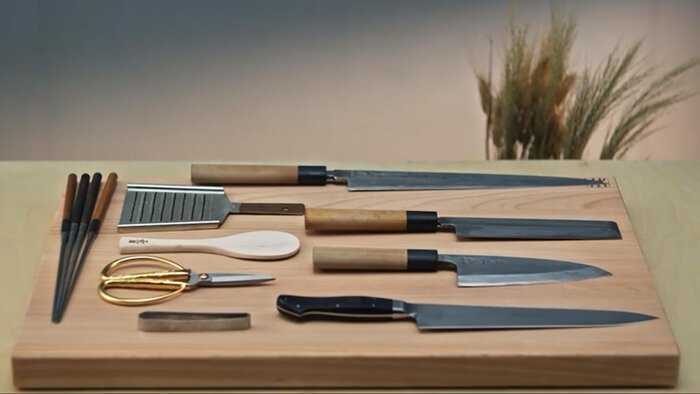
Lessons 3 and 5 unpack Japanese essentials: tools and pantry ingredients. For both lessons, Nakayama is joined by her wife, Carole, and together they explain the core components of Japanese cooking.
As they introduce these Japanese essentials, you will learn:
- Typical uses for each ingredient
- Which ingredients are responsible for signature Japanese tastes
- How the ingredients are traditionally made
- What to look for as a signal of quality ingredients
- How to store the items for freshness and identify when ingredients are no longer at their prime
- Which Japanese knives and hand tools are essential in the kitchen
- How and why the usuba, deba and yanagi knives differ from each other
- The importance of respecting and caring for your knives
You’ll also get to learn which ingredient is Nakayama’s favorite and get a glimpse at the most beautiful pair of scissors I’ve ever seen!
Lesson 16 is all about the Japanese rice pot — the donabe. You’ll learn a little about Japanese rice traditions while Nakayama takes you through the process of seasoning a donabe.
These classes were really interesting but also they left me feeling a little daunted.
I had no idea where to find a lot of the ingredients and I only had 2 of the 8 Japanese kitchen essentials (if you count a rubbish pair of kitchen scissors!). In short, I felt a little under-equipped to continue!
But don’t let that put you off. There is a helpful page in the workbook on where you can source authentic Japanese ingredients if you’re in the US.
You can also make do with lots of regular kitchen items and you’ll get helpful tips along the way. Check out my “what you will need” section for alternatives that I made work!
Section 2 of 3: Preparation techniques
Lesson 4: Ichiban Dashi: Kombu and Bonito Stock
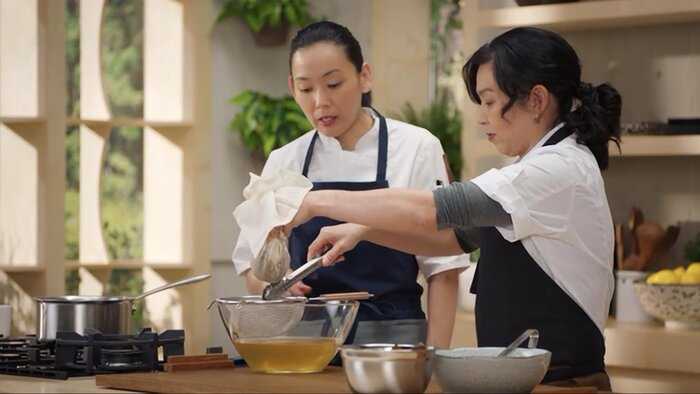
Dashi is a simple seaweed and tuna broth that is one of the cornerstones of Japanese cuisine. It’s great to have on hand as it’s used pretty much everywhere!
In Lesson 4, Nakayama demonstrates the preparation of ichiban dashi (first broth) which is a deceptively simple broth with only three ingredients: kombu, katsuobushi, and water.
In principle, this recipe seems absurdly easy to make but here, Nakayama explains that there are many subtleties that can really affect how your dashi turns out.
Here, you’ll learn:
- All about ichiban dashi and also niban dashi
- How to select quality kombu for the base of your dashi, and practical ways to work with less premium kombu if you have to
- The tiny factors that can make or break your dashi
- Additional uses for surplus dashi and kombu
Lesson 6: Whole Rockfish Preparation
“Every single part of the fish has something different to offer.”
In Lesson 6, Nakayama takes you through how to prepare a whole rockfish: from gutting through to fileting. Here, she shares some professional tips and tricks to working confidently with fish, as well as demonstrating key knife skills.
You will learn:
- Why rockfish is classed as shiromi in Japanese cuisine and what flavor profiles it offers
- How mottainai (traditional zero-waste approach) goes hand in hand with the art of kaiskei
- Top tips to preserve the best flavor of your rockfish, and how to avoid an overly fishy taste
- Techniques that can help you prepare fish without a deba
Lesson 10: Preparing Tuna for Yakimono and Otsukuri
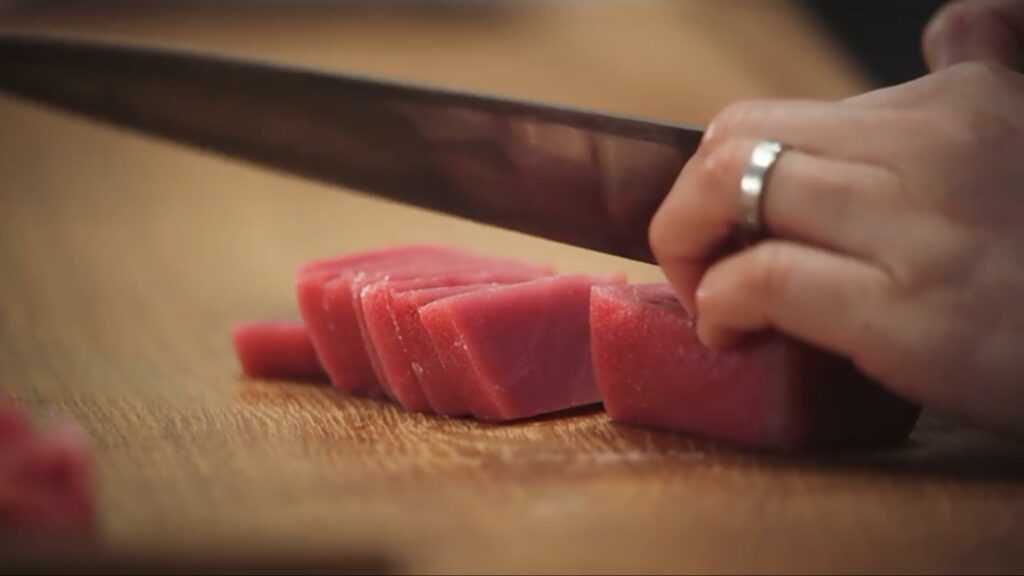
The other preparation class is Lesson 10, focusing on the most prized fish in Japanese cuisine: tuna.
Tuna is a really large fish so you won’t learn how to break it down (thankfully!), rather how to start with sei — the upper back tuna loin — and break it down into different components.
Throughout the class, Nakayama shares a bit about each cut she makes and why she’s chosen to cut in the way that she has.
In this lesson, you will get to know:
- Akami, aburami and chutoro — 3 sections of tuna — and what to do with each
- The strengths and weaknesses of various cuts and how you can use them to your advantage
- Practical tips for safety and ease when working with tuna
Section 3 of 3: Recipes to create your own kaiseki meal
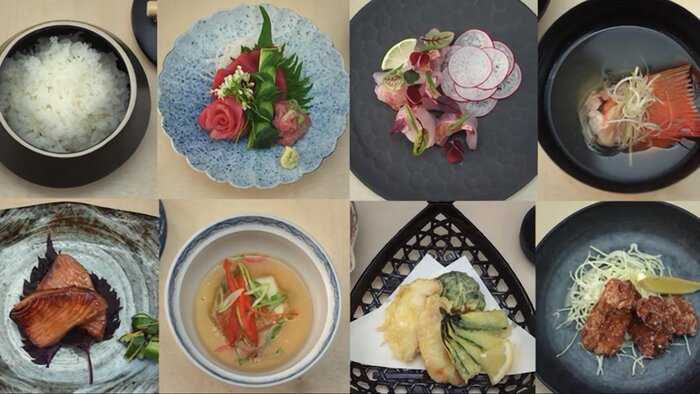
The remainder of the lessons are recipe videos that you can cook along with to create your own kaiseki meal.
There are 8 dishes in total:
Recipe 1: Zuruki: Modern Rockfish Sashimi (Lesson 8)
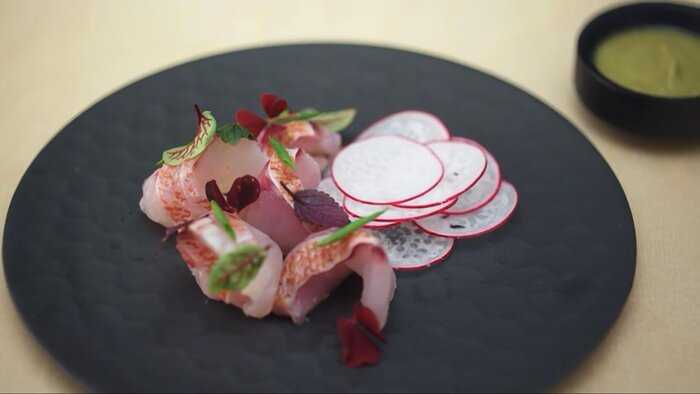
In Lesson 8, you’ll get started with cooking your kaiseki in earnest. The first dish of the menu is zuruki — a rockfish sashimi. It features both usu-zukuri (thinly sliced sashimi) as well as hiragai (thick cut sashimi).
In keeping with n/naka’s philosophy, what you’ll learn here isn’t a 100% traditional dish, but pairs traditional techniques and ideas with modern flavors.
You will learn:
- Key steps for working with raw fish — how to keep it super fresh, draw out impurities and preserve its true flavor
- How to cut usu-zuruki and hiragi, and tips for doing it without a deba sashimi knife
- Really unique and impactful tips for elevating your garnish
- How Nakayama plates zuruki a n/naka
- The traditional Japanese plating rule that you must not break!
I’ve always been really daunted by the idea of working with raw fish at home but the step-by-step guides and handy tips made it feel much more manageable.
Recipe 2: Owan: Soup With Bone Broth (Lesson 9)
In Lesson 9, you’ll get to experience the first warm dish of the course. Owan soup or bone broth, is a great palate cleanser after the coolness of the previous zuruki from Lesson 8.
In keeping with the zero-waste mottainai approach, you’ll be using the bones and collar from your rockfish to impart flavor into your ichiban dashi from Lesson 4.
Here, you will learn everything you need to know about owan, including:
- Elements of flavor, straining and serving techniques for an amazing owan soup
- How to avoid agitating impurities so that you get the best owan possible
- How to balance elements in terms of both flavor and presentation
- Great tips for working with daikon that doesn’t taste how you expect
- Practical pointers on what to look for throughout the cooking and preparation process
- The traditional way to serve owan, plus a really sneaky trick they use at n/naka to ensure owan is served perfectly every time
Recipe 4: Otsukuri: Traditional Tuna Sashimi (Lesson 11)
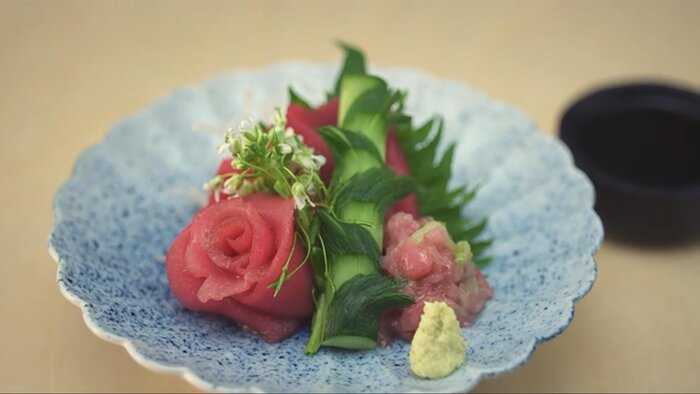
Lesson 11 teaches you how to make the most breathtaking dish yet: otsukuri, which is traditional tuna sashimi.
Using the tuna portions from Lesson 10, you’ll learn a ton of techniques to create your own culinary masterpieces.
There were definitely moments in this class where I felt completely in awe of Nakayama’s knife skills. For instance, she turns a daikon radish into a continuous wafer-thin sheet as she’s talking you through the components of the dish.
There’s absolutely no way my skills are as good as that but it was fun to follow along and have a go at least!
In this lesson, you’ll learn:
- How to prepare classic Japanese vegetable garnishes including daikon radish and matsu-giri cucumber
- A really great trick for stopping your wasabi from sticking to your microplane
- How to cut hiragi sashimi
- The techniques needed to make a sashimi rosette which looks incredible!
- Japanese traditions for plating sashimi
Recipe 4: Yakimono: Grilled Tuna (Lesson 12)
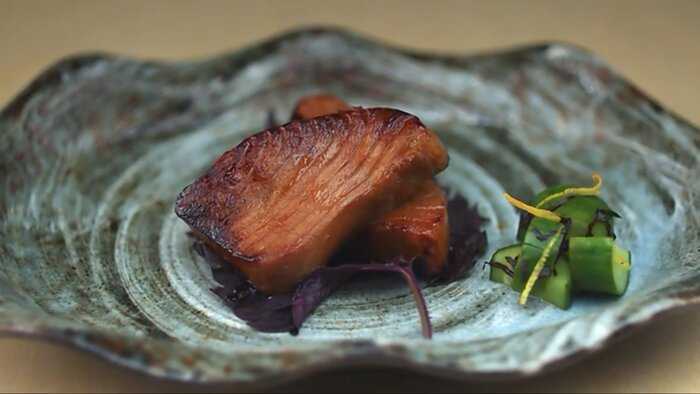
In Lesson 12, you’ll still be working with tuna but in a completely different style to the previous lesson. Here, you’ll learn the art of yakimono: Japanese grilling.
Continuing on the zero-waste theme, Nakayama explains that while sashimi fish must be the absolute freshest possible, if you notice the color starting to change on a piece of tuna, you can still cook it in a really delicious way.
The food in this lesson looks incredible: grilled tuna that glistens with a beautifully caramelized marinade. I could almost taste it through the screen!
Here, you will learn:
- All about binchotan: Japanese grilling charcoal
- How you can impart additional flavors into your grilling to make it a multi-layered experience
- Ingenious tips for controlling the level of heat that you get from your coals
- How to skewer your fish best to help with the cooking process
- Where in the kaiseki meal yakimono usually appears, and why
- The best ingredients to complement your yakimono tuna
Plus, you’ll also get a top tip for how to carry the mottainai zero-waste cooking philosophy to preserve and reuse your binchotan coals!
I actually tried out the yakimono technique on some tofu and it tasted incredible!
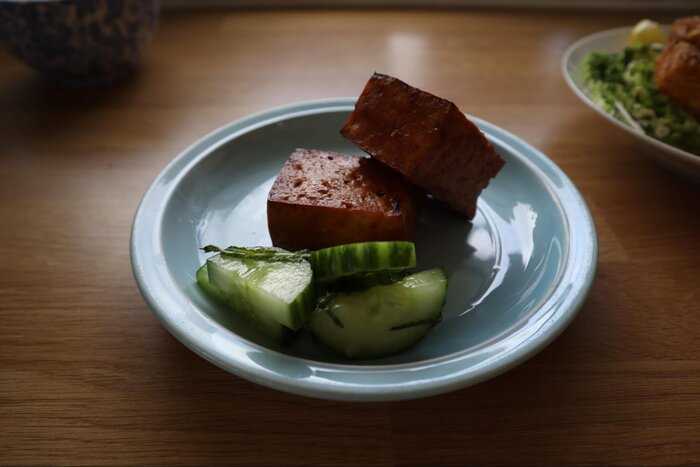
Recipe 5: Mushimono: Steamed Rockfish (Lesson 13)
In Lesson 13, Nakayama focuses on mushimono — steaming — with a beautiful, light rockfish dish.
It includes a potato purée, anake (dashi sauce), and raw garnishes in addition to the steamed fish, and for me, was the most complex dish yet.
Most of my cooking experiences stem from French cuisine so I was really surprised (and secretly delighted) to see Carole making a potato purée in the food processor! She shares a few tips which I found worked really well.
In this mushimono class, you will learn:
- Which fish works best in the mushimono style
- How you can achieve a really clean look in your steamed fish, avoiding any less attractive albumin spots
- A really clever way to mimic a fatty, satisfying mouthfeel, even in a very lean dish
- Really practical tips and guidance for taking your food to the next level
Recipe 6: Agemono: Rockfish and Vegetable Tempura (Lesson 14)
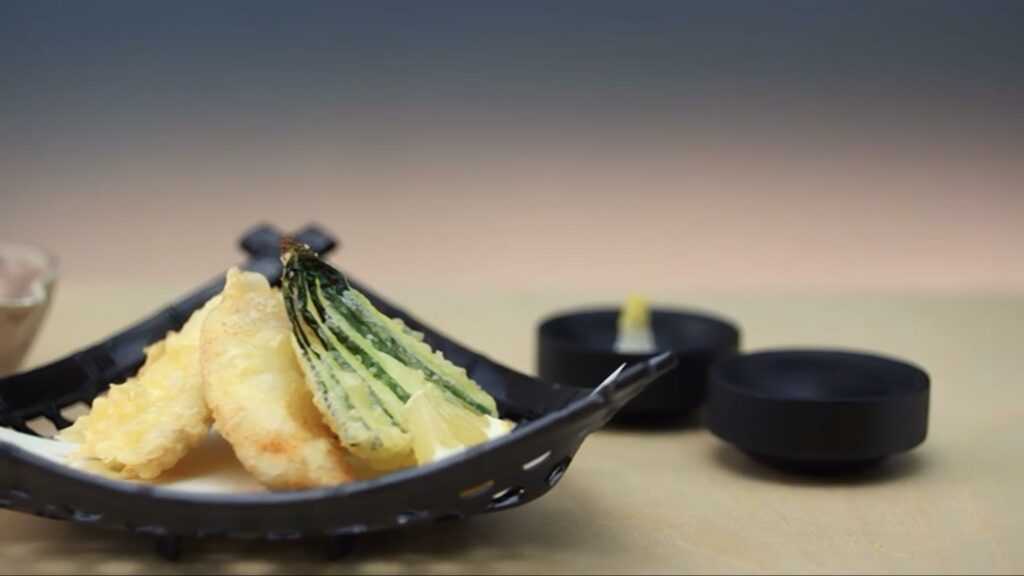
If you’ve been hoping to learn about tempura in this MasterClass, Lesson 14 is the class for you!
In this class, Niki and Carole tempura rockfish, broccoli and zucchini.
Now, I’ve had some experience with battered and deep fried things — fried chicken, fish and chips (and their vegan alternatives) — but was surprised at how many tips and tricks I learned along the way.
Here are some of the things you will learn:
- What tempura flour is, why it’s important, where to buy it, and what you can do if you can’t buy it
- The one must-do trick to make your tempura batter extra crispy
- Which vegetables and fish work well for tempura
- What to aim for in your tempura batter
- How you can vary your frying oil to impart different flavors into your ingredients
- Amazing practical tips — what to listen for and look for, as well as safety tips
- The traditional way to plate tempura
- Which part of kaiseki you would expect to see tempura featured
Recipe 7: Agemono: Tuna Karaage (Lesson 15)
Continuing with the agemono fried theme, is tuna karaage. This is tuna with a dry potato starch and panko crumb. Think of it a little as fried chicken!
This lesson in particular, has a real zero-waste feel. You’ll use your leftover marinade from Lesson 12 and learn how to trim an older sashimi cut, repurposing it into this mouthwatering dish.
In many ways, karaage has similar techniques to tempura, so this lesson was a lot shorter than Lesson 14.
That said, there are still lots of things to learn, including:
- What other fish and meats work well for karaage
- How to serve karaage in the traditional Japanese style
And you’ll finally learn why Nakayama always wears gloves when handling fish!
Here’s my attempt at tofu karaage:
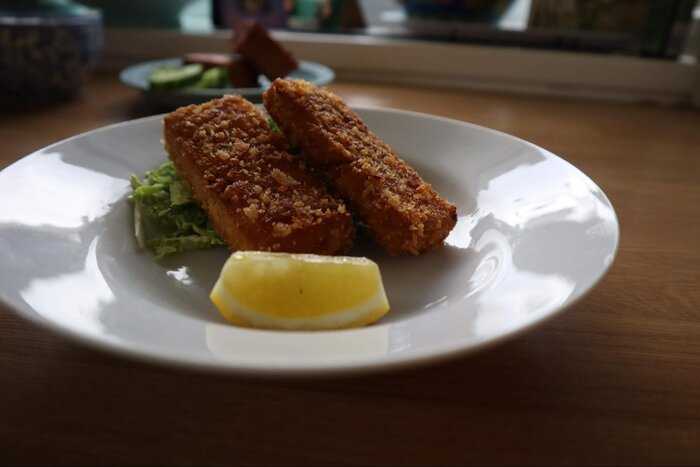
Recipe 8: Shokuji: Rice and Pickles (Lesson 17)

Lesson 17 rounds off the recipes in the traditional manner of kaiseki: with a bowl of rice and pickles.
Nakayama is very passionate about rice and stresses that the preparation of the rice is key as it allows you to become familiar with your rice before you start the cooking process.
In this final recipe lesson, you will learn:
- How to make Japanese quick pickles, and how you can use scraps to avoid waste
- Nakayama’s recommend rice-washing technique
- The essential steps to making the perfect rice
What I liked about Niki Nakayama’s MasterClass
Unique opportunity to learn from a culinary icon
Niki Nakayama is undoubtedly a brilliant chef. And she’s incredibly unique in her approach to cooking.
It feels like a real privilege for her to share her secrets with us and I learned so so much along the way.
While there are a considerable number of videos about Nakayama, there are very few resources where she shares her tips and tricks, so this really is a unique MasterClass.
Really great teaching style and explanations
There’s a big difference between being able to follow along with something and really understanding the processes of what you’re doing.
And for me, that’s the difference between a good class and a great class.
This MasterClass is packed full of nuggets of wisdom that help you to grow your understanding of Japanese kaiseki cuisine and how to use your new knowledge beyond the end of the class.
Carole, in particular, is great for this. Often, Nakayama will explain something and Carole will interject with “so if you see this…. it means… and you can adapt by…”
It alleviated a lot of anxiety in the kitchen and made me feel like I was really in control of what I was doing.
You get to learn about traditional Japanese tools but get tips to adapt to what you have
I really loved learning about all the different Japanese tools and equipment. Hearing the difference between the 3 core Japanese knives and how they are used was really fascinating.
That said, I finished the Japanese Equipment Essentials class feeling a little worried because I had pretty much none of the essentials that Nakayama talked about.
If that sounds like you, don’t worry!
Throughout the course, Nakayama and Carole will often suggest alternatives that you can use like a standard chef’s knife for some places, or a certain technique you can use if you don’t have the proper tools.
I’m glad that they included the history and advantages of using proper Japanese tools, but it was so so helpful to feel that I could get started with what I already had!
Zero-waste food philosophy
Kaiseki is all about honouring the ingredients that you have and celebrating the world around. By default, the mottainai zero-waste philosophy seeps through it.
Throughout the course, Nakayama stresses not to waste ingredients and offers really practical solutions on how to avoid food waste.
You’ll get to hear how to properly store things, how to tell when ingredients are past it, how to re-use and repurpose ingredients so that they’re not wasted.
Nakayama’s zero-waste philosophy feels far from preachy and, given that she encourages you to source the best ingredients you possibly can, your wallet will probably thank her for it too!
Impressive, but manageable recipes
Earlier, I mentioned that I felt a bit daunted by the sheer beauty of Nakayama’s cooking.
I mean, look at this dish from her restaurant:
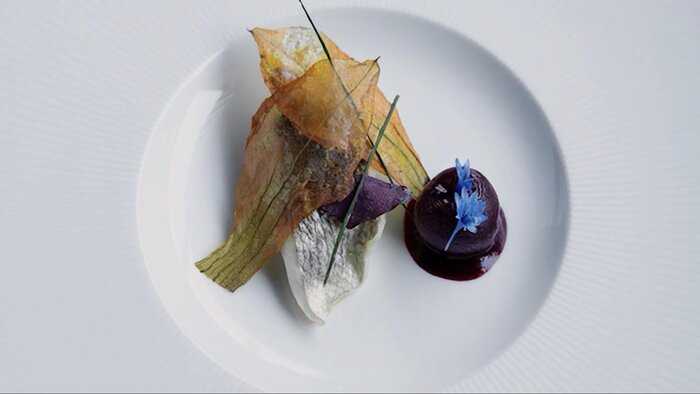
Compared to her sample menu for n/naka, these dishes are definitely pared down versions, but I was really glad to see this!
All of the recipes that you will learn are impressive, flavorful and beautiful dishes, but they should be well within the reach of a normal person like you or I, without having to put in the decades of experience that takes Niki to Michelin star levels.
On-screen glossary for unfamiliar terms

I’ve never prepared kaiseki before and there were a lot of unfamiliar terms. Nakayama is great at explaining each term, but MasterClass has also done a great job with the on-screen glossary.
It usually takes me a while to get the hang of new words so I was particularly happy to see that the pop-up explanations continued throughout the course, even when I’d encountered the word once or twice before.
It’s a small thing, but really helps you to take on board as much information as possible with lots of unfamiliar terms flying round.
What I think could be improved
Extra information in the workbook
The workbook is essentially a recipe book which felt like a shame.
Some MasterClasses (like Gordon Ramsay’s) include a workbook which has recipes, tonnes of additional reading, and assignments, and I really felt that this course could have benefitted from that.
Occasionally, I found myself with extra questions that it would be helpful to know. And while there is some additional information in the workbook, it doesn’t go much beyond what you would expect to find in a conventional recipe book.
For example, at one point Nakayama says that it’s paramount to know how to sharpen your knives, and that it’s difficult but you’ll get the hang of it. But she doesn’t mention anything about how to sharpen them properly.
I completely understand that within the confines of a class, going down every tangent is not viable nor is it helpful, so that these things aren’t addressed in the videos is fine by me.
That said, this is where the workbook could have helped to supplement the class and add additional information that’s missed in the videos.
A shopping list for the entire course
The ingredients for each recipe are listed individually at the start of each recipe but I would have liked to see a shopping list for the entire course.
Why?
You’ll see a whole fish listed for the portioning classes and then individual portions listed in the recipes so you know how much to use.
On scanning through, it looks like you need to buy a huge amount of fish, but really you only need one rockfish and a tuna loin.
It would be helpful to see an overview of the ingredients you’ll actually need to buy for some extra clarity.
Hard to source ingredients
This con is absolutely not Niki’s fault at all, but living in a small town, it was really hard to source some of the ingredients.
While some store cupboard items, like kombu and katsuobushi, are available online, I had no idea where to find things like yuzu and ended up just substituting for lemon and/or lime.
There is a buying guide workbook that recommends where you can source more authentic ingredients and it’s really helpful for the right people. The downside is that it’s largely specific to the US and not applicable to several countries.
Not for everyone
This MasterClass is only really suitable for a very specific set of people.
In this MasterClass, you’re going to be cooking in Japanese style and you won’t touch a piece of meat — it’s all fish-based.
That’s definitely not for everyone.
If you love that style of food, then it’s not a problem, but be aware that it’s not so transferable and adaptable as something like Gordon Ramsay’s MasterClass.
That takes us really nicely into the next section:
Who is this course for?
This course is definitely not for vegetarians and vegans. At the start, Nakayama gives a suggestion on how to make dashi vegan, but other than that, there’s not much there for non-fish-eaters.
To see if the recipes were adaptable, I tested a few techniques with tofu instead of fish, and while they were successful, you would definitely get more from the course if you actually eat fish.
Plus, the gutting and breaking down of the fish is pretty graphic so you’d need to be a strong-stomached vegan to get through the videos!
Really, the food disclaimer at n/naka pretty much sums it up:
Please note however, that in order to maintain the integrity of our dishes, there are certain dietary accommodations we cannot facilitate – including but not limited to requests for: no vegetables, no fish/meat only, no seafood (including kelp broth) and severe bean or gluten allergies (that would exclude all soy sauce or miso).
If any of the above sounds like you, you might want to check out the other culinary courses available on MasterClass.
That said, this class is amazing for the right person. If you:
- Are a Japanese food enthusiast
- Love seafood
- Passionate about zero-waste cooking
- Want to learn more about the traditional of kaiseki
- Are a big Niki Nakayama fan
Then you are sure to absolutely love this course!
How much does the course cost?
MasterClass pricing may have changed since this review was written, so for the latest purchasing information please check here.
At the time of writing, a MasterClass subscription costs $120 per year which works out to around $10 a month.
With the subscription, you have access to all the 200+ courses on MasterClass. That means you can take Niki Nakayama’s class alongside Gordan Ramsay, Ottolenghi, Thomas Keller and Aaron Franklin, all for the same flat fee.
The great thing about this offering is that the more classes you take, the less the effective cost per class is.
Bearing in mind that these classes are taught by world experts the value is unbeatable. It’s sort of a way to hack learning.
Whatsmore, MasterClass also offers a 30 day refund if you’re unhappy with your purchase.
Given that a trip to n/naka with a friend can set you back $800, the price to learn some of Nakayama’s techniques is incredible.
Alternatives to Niki Nakayama's MasterClass
While the Niki Nakayama MasterClass is a really unique experience, it’s not for everyone. Maybe it’s the price point, or the cuisine, or the learning style.
Whatever the reason for looking at alternatives, I’ve got your back.
Niki Nakayama resources
The MasterClass is pretty much the only guided insight into Nakayama’s cooking process out there. She doesn’t even have a cookbook!
That said, if you’re interested in her culinary journey more than anything, her episode of Chef’s Table might be enough for you.
Culinary MasterClasses
If you’re a cooking enthusiast but not so much of a fish enthusiast, there are plenty of other culinary MasterClasses available.
My favorites are:
- Gordon Ramsay Teaches Cooking I & II
- Thomas Keller Teaches Cooking Techniques
- Massimo Bottura Teaches Modern Italian Cooking
- Yotam Ottolenghi Teaches Modern Middle Eastern Cooking
There are several more chefs on the platform. Click here to find the full list.
Japanese cooking courses
- Japanese cooking courses on Skillshare
- Chef JA Cooks Simple Gohan on Skillshare
- Online Sushi Making at Cozymeal
For general cooking classes, you can also check out YesChef. They’re a subscription based platform 100% dedicated to cooking.
Niki Nakayama's MasterClass: what others have said
The down side of completing and reviewing Niki Nakayama’s MasterClass so soon after its release is that, when I trawled Reddit for the opinions of others, I couldn’t find anything.
So, I went back to the release of the trailer on Facebook and found how people felt about Nakayama having a MasterClass, and some thoughts on MasterClass that others posted below the trailer.
Here’s what I found:
“This is the MasterClass that finally got me to sign up! Arigatōgozaimashita!”
“Sensational class again I love Kaiseki style food!”
“Will join just for this -- and there are a TON of intriguing classes on the platform! But this one does it…”
And on MasterClass:
“Joining Masterclass will change you [sic] way of thinking. There is so much to learn from the Best one! My best investment in a while. You are going to love it!”
“MasterClass has been such an amazing part of my husband and my covid experience. There are some amazing classes!!!!!!”
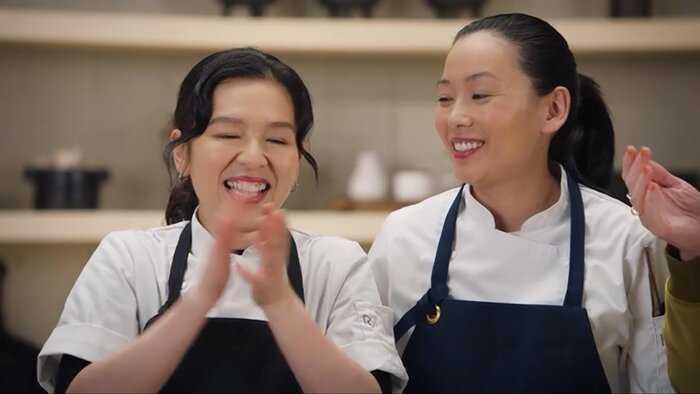
Overall, I’ve never seen such a positive reaction to a MasterClass but I’ll also check back in to update as more people take the class.
How long it took to complete the course
The course itself is around 4 hours long and I spaced the videos out over 4 days. I then went back to cook and refine some things I had learned and I expect to keep coming back to the videos for quite some time.
How fast or slow your work through the course is completely up to you.
Although, that said, I would watch all the videos before starting to cook because, if you’re going to serve up a true kaiseki meal, you’ll be cooking all the dishes in one day!
Is the course content unique?
When researching for the “alternatives” section of this review, I made a discovery:
This course is really unique.
Sure, the tradition of kaiseki is centuries old and Nakayama uses traditional techniques which by default aren’t unique.
But Nakayama has virtually no instructional content out there. No YouTube videos (aside from very short documentary-style ones), no recipe books. Nothing.
So while you could technically learn kaiseki from anywhere, the opportunity you get here to learn Nakayama’s culinary secrets is really rare.
What you will need
At the beginning of the MasterClass, Nakayama runs through her Japanese kitchen essentials.
The list looks really daunting, but don’t worry. You’ll get handy tips for adapting to use what you have and here’s what I managed with:
- A good quality chef’s knife (super sharp if possible!)
- Chopsticks
- Saucepans
- A small barbecue / grilling area
- Metal skewers
- Microplane
You might also want to order in some store cupboard ingredients online such as:
- Kombu
- Katsuobushi (bonito flakes)
- Binchotan (or quality hardwood charcoal)
- Sake
- Mirin
Is Niki Nakayama's MasterClass worth it?
For me, the Niki Nakayama MasterClass is definitely worth it.
Niki and Carole have decades of experience between them and make a really great teaching team. They share such amazing tips that only Michelin star chefs would know and it’s a real honour to get a glimpse into their kitchen.
I really loved the mottainai zero-waste cooking philosophy and it was really incredible to see how much both chefs respect and treasure each ingredient.
Throughout the duration of the course, I tried so many recipes that I’ve never cooked before and I can’t wait to continue making kaiseki.
I appreciate that it’s not the perfect course for everyone (vegans, fish haters and coeliacs, I’m looking at you) but if you love Japanese cuisine and you love Niki Nakayama, this MasterClass really is money well spent.
Given that it can cost you $400 to eat at n/naka, it’s amazing that you can take Nakayama’s class and learn life-long skills for less than half of that. Plus, you can get even better value for money by exploring other classes on the platform with an All-Access Pass.
And MasterClass has a great 30 day refund policy so you’re protected just in case you don’t like it!
Frequently asked questions
A MasterClass all-access-pass costs $120 a year ($10 a month). This gives you access to Niki Nakayama's MasterClass, alongside 200+ other courses.
Niki Nakayama's MasterClass is 4 hours and 7 minutes long and consists of 18 videos.
Unfortunately you cannot get the Niki Nakayama MasterClass for free. But MasterClass has a range of purchasing options and offers refunds if you’re not happy.
Yes, MasterClass operates a 30 day refund policy if you purchase directly through them. If you purchase through other providers, their returns policy may apply.

Glenda is an award winning full time professional harpist. Alongside harp she also plays the piano and violin. Besides music, her passions are cooking, writing and learning.
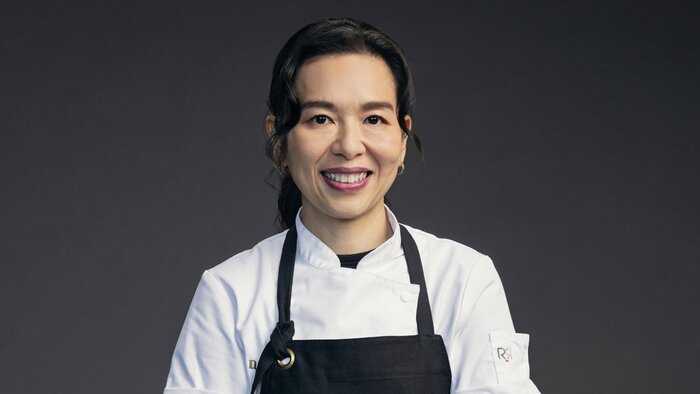


Great write-up, I am normal visitor of one¦s website, maintain up the nice operate, and It is going to be a regular visitor for a lengthy time.
Thank you so much! We’re thrilled to have you as a regular visitor. Your support means a lot to us, and we’ll keep working hard to bring you valuable content. Looking forward to seeing you here for a long time!